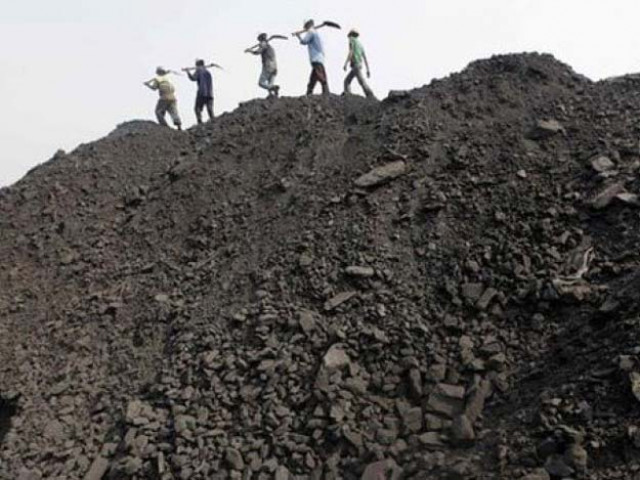Mining, power project: Chinese firm asks Punjab to set coal price mechanism
Has not been able to file power tariff petition for its 300MW plant.

Feasibility study of the project had been completed and more than 20 engineers were working at the site of the mining project and conducting a survey for the power project, the company said. PHOTO: REUTERS
This, according to the company, will enable it to file a tariff petition with the National Electric Power Regulatory Authority (Nepra).
CMEC is planning to establish a 300MW power plant at Pind Dadan Khan, Jhelum, the fuel for which will come from domestic coal deposits. It is working on a 1.87-million-ton coal-mining project.
However, the company had not been able to file a tariff petition since November 2014 owing to non-confirmation of the coal price mechanism, said a letter written by the CMEC assistant general manager to the Punjab government in the first week of January.
CMEC got the Letter of Interest from the Private Power and Infrastructure Board (PPIB) for establishing the 300MW coal-fired power plant at the mouth of the mine in November 2014.
Feasibility study of the project had been completed and more than 20 engineers were working at the site of the mining project and conducting a survey for the power project, the company said.
The progress of the project depends on finalisation of the tariff, which will be calculated on the basis of the price mechanism for domestic coal resources provided by the Punjab government.
The nature of coal resources in the Salt Range indicated that the mine-mouth coal cost would be higher than the average benchmark coal price in the world market, the company said.
Thar coal is not suitable for transportation because of average 50% moisture content and imported coal will also not give any benefits due to its high inland transportation cost.
Existing coalmines in the Salt Range were small scale, manually operated and largely seasonal and were not capable of meeting the need of the power plant and the company had to invest in large-scale coal mining while using mechanised or semi-mechanised technologies, it pointed out.
“There is a significant difference between the existing coalmines and the captive coalmines, which will be developed for the power plant in the Salt Range.”
The company argued that because of the big difference it was neither practical to borrow the coal price mechanism directly from the Thar coal nor feasible to set a uniform coal price while determining the power tariff.
Published in The Express Tribune, March 6th, 2015.
Like Business on Facebook, follow @TribuneBiz on Twitter to stay informed and join in the conversation.



















COMMENTS
Comments are moderated and generally will be posted if they are on-topic and not abusive.
For more information, please see our Comments FAQ